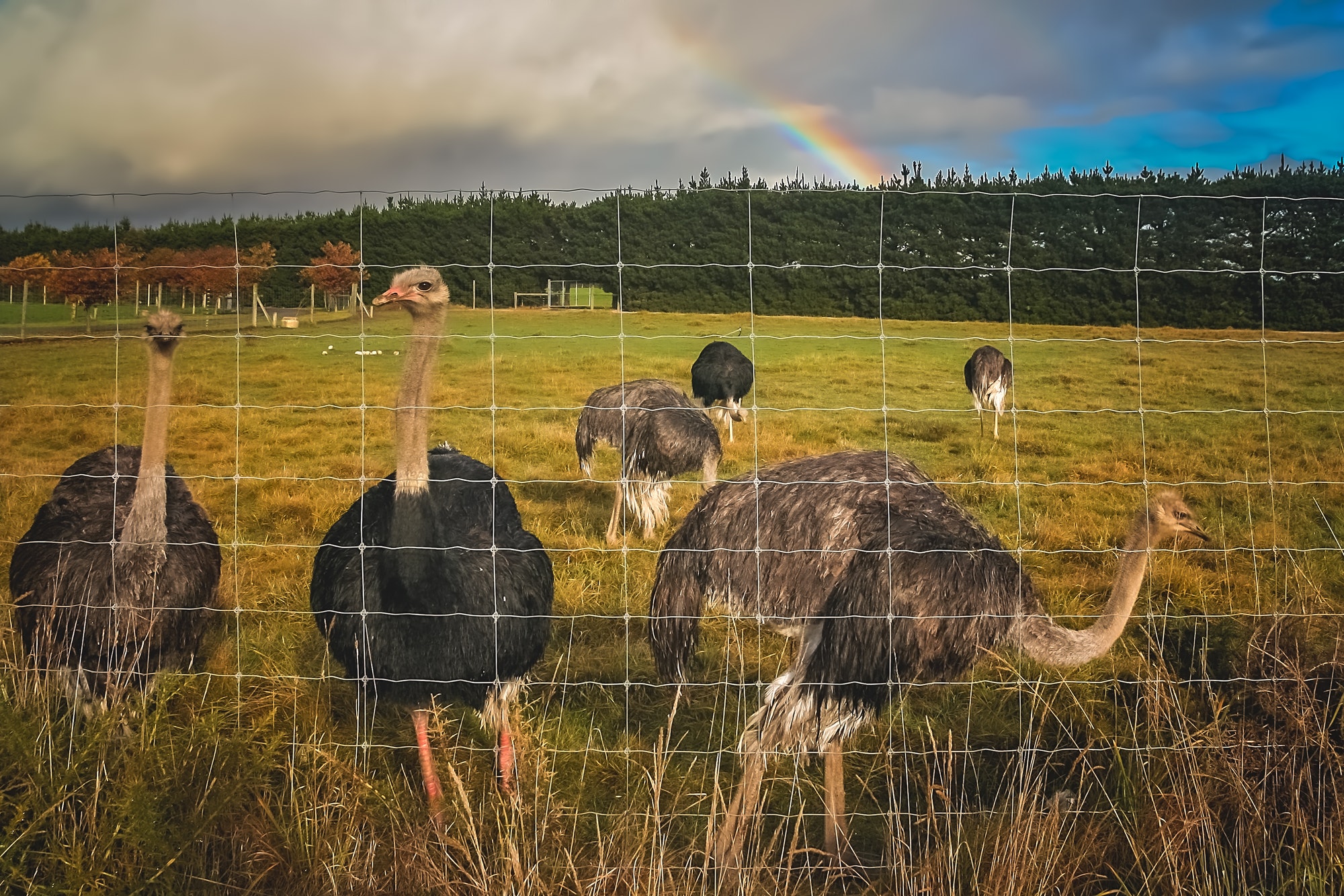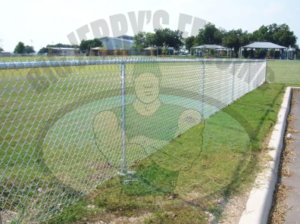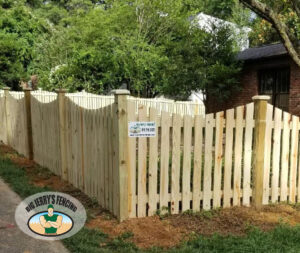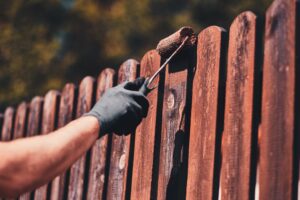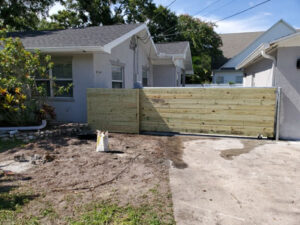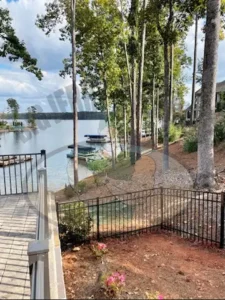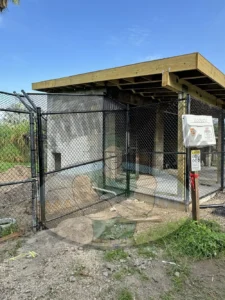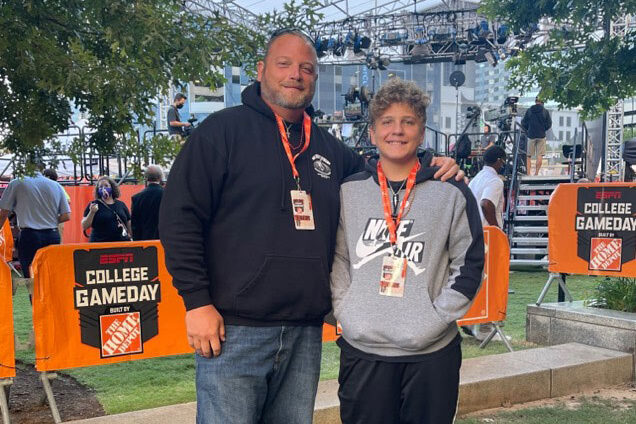Introduction
Welcome to our detailed tutorial on installing a wire farm fence, brought to you by Big Jerry’s Fencing. Known for making fence buying fast and easy, we’re here to guide you through every step of this DIY project. Whether you’re fencing in a new puppy, seeking privacy, or adhering to HOA regulations, we’ve got you covered.
What You’ll Learn
This guide will provide step-by-step instructions on installing a wire farm fence. We’ll cover everything from choosing the right materials to the final touches, ensuring your fence is sturdy, functional, and aesthetically pleasing.
Step 1: Planning and Preparation
Understand Your Needs
- Assess your property layout yourself or using our innovative DRAW YOUR FENCE tool.
- If you use us to install your fence, you can consult with our team to discuss your specific requirements.
- Our clients will receive a personalized sketch with dimensions and product details.
Gather Your Materials
- High-quality wire fencing, posts, and installation tools.
- Post Hole Digger: For digging holes for fence posts.
- Fence Pliers: Essential for cutting and twisting wire.
- Hammer: Needed for driving in staples or nails.
- Wire Tensioner: To tighten the wire and ensure it’s taut.
- Level: To ensure posts are vertically straight.
- Measuring Tape: For accurate spacing and measurements.
- Staple Gun (or Heavy-Duty Hammer Stapler): For attaching wire to wooden posts.
- String Line: To maintain a straight line along the fence.
- Shovel or Spade: For digging and adjusting soil around posts.
- Safety Gear (Gloves, Goggles, Boots): To protect yourself during work.
- Wire Fencing: Choose a type suitable for your needs (e.g., welded wire, barbed wire).
- Fence Posts: Wood, metal, or concrete posts depending on preference and soil type.
- Concrete Mix: For securing posts in the ground (optional, but recommended for stability).
- Fence Staples or Nails: To secure wire to wooden posts.
- Gate Kit (if installing a gate): Includes all necessary components for gate installation.
- Gate Latch and Hinges (for gates): Essential for a functioning and secure gate.
- Corner Braces: To reinforce the corners of the fence, especially important for larger installations.
- Post Caps: To protect the top of wooden posts from weather elements (optional).
Step 2: Setting Up Your Fence Layout
Marking Your Property
- Use the sketch from Big Jerry’s Fencing to mark the fence line.
- Ensure you have all the necessary permissions and adhere to local regulations.
- Additional Supplies
- Markers or Flags: For marking the location of posts and boundary lines.
- Gravel: For drainage around the base of the posts (optional).
- Fence Stretcher (for larger projects): Helps to distribute tension along the fence line evenly.
- UV-Stabilized Zip Ties or Wire Ties: For additional securing of wire to posts.
Post Installation
- Learn the correct spacing and depth for your fence posts.
- Tips for ensuring your posts are level and secure.
Step 3: Attaching the Wire Fencing
Choosing the Right Wire
- Understand the different types of wire fencing and their benefits.
- Expert advice on selecting the best wire for your needs.
Installation Technique
Attaching wire to fence posts is a crucial step in fence installation. Here’s a detailed guide on how to do it effectively:
1. Prepare Your Materials and Tools
Before you start, make sure you have your wire fencing, fence pliers, tensioner, staples or nails, and safety gear (gloves and goggles).
2. Roll Out the Wire
- Begin at one corner or end post.
- Unroll the wire along the fence line. It’s easier to do this with two people: one to unroll and the other to guide the wire to prevent tangling.
- Lay the wire along the side of the posts where you plan to attach it.
3. Starting at the Corner or End Post
- Lift the wire to the height you want it on the post. The bottom of the wire should be a few inches above ground level to prevent rusting and allow for mowing or grass trimming.
- Use the fence pliers to cut the wire to the appropriate length, leaving extra wire to wrap around the post and secure it.
4. Attaching the Wire
- If you’re using wooden posts, hold the wire in place and use a staple gun or hammer to drive fence staples into the post, securing the wire. Be careful not to staple the wire too tightly – it needs a little play to allow for tensioning.
- For metal posts, use wire clips or ties designed for your post type. Wrap the tie around both the post and the wire, then twist it tight using pliers.
5. Tensioning the Wire
- Move to the next post. Pull the wire as tight as possible by hand to the next post. For longer stretches, you may need a fence stretcher or tensioner to achieve the necessary tightness.
- Secure the wire to the post as before, ensuring it remains taut.
6. Repeat for Each Section of Fence
- Continue this process along the fence line, attaching the wire to each post.
- Check the tension as you go. The wire should be tight enough not to sag but not so tight that it’s under extreme tension.
7. Securing the Wire at Corners
- At corner posts, you may need to reinforce the wire’s attachment due to increased tension.
- Wrap the wire around the corner post and back onto itself, twisting to secure. Alternatively, you can use corner braces and attach the wire to these.
8. Adding Additional Rows of Wire
- If your fence design requires multiple rows of wire (as in the case of livestock fencing), repeat the above steps for each horizontal row.
- Ensure even spacing between rows for consistency and stability.
9. Final Adjustments
- Once all the wire is attached, walk along the fence line and make any necessary adjustments to ensure the wire is uniformly tight and properly attached to each post.
- Trim any excess wire from the ends to prevent injury.
10. Inspect the Fence
- After installation, inspect the entire fence line to ensure the wire is secure and evenly tensioned.
- Look for potential hazards like loose wire ends and secure them.
Step 4: Adding Gates and Finishing Touches
Gate Installation
- Tips on choosing and installing the right gate for your fence.
- Step-by-step guide to ensure your gate is functional and aligns with the fence.
Final Checks
- How to inspect your fence for any potential issues.
- Finishing touches to enhance durability and appearance.
Step 5: Maintenance and Care
- Advice on maintaining your wire farm fence for longevity.
- Simple steps for regular checks and repairs.
Conclusion
Celebrate Your Achievement
- Enjoy the satisfaction of successfully installing your wire farm fence.
- A well-installed fence adds value and security to your property.
Need Help?
- Big Jerry’s Fencing is always here to assist.
- Contact us if you prefer professional installation.
Next Steps
- Explore our other fencing solutions and services.
- Learn about our financing options with Acorn Finance.








